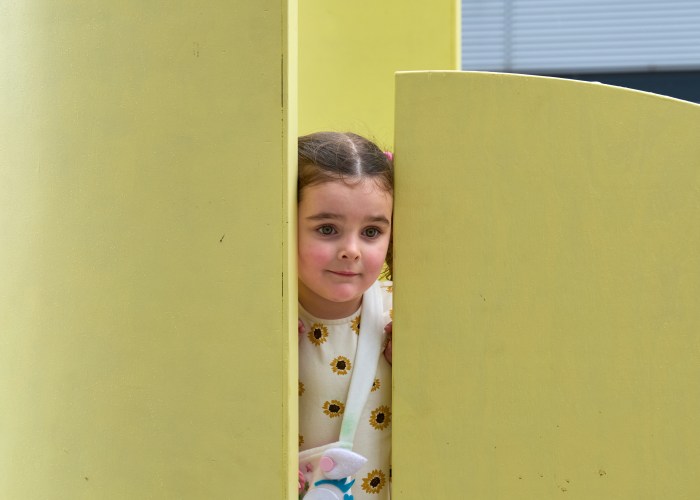There is no doubt that New York City is
a dance mecca.
Two prestigious ballet companies – American Ballet Theatre and
New York City Ballet – reside at Lincoln Center, dozens more
perform in the city throughout the year, and such venerable dance
institutions as the Mark Morris Dance Group call the borough
of Brooklyn home. And there’s always the Brooklyn Academy of
Music’s annual spring series, DanceAfrica.
So it’s easy to miss other world-class troupes as they touch
down for a single performance. Don’t miss this weekend’s opportunity
to see the Royal Danish Ballet making its Brooklyn Center for
the Performing Arts debut on Jan. 25 in the Walt Whitman Theatre.
The ballet troupe, under the artistic direction of Peter Bo Bendixen,
is based in Copenhagen, Denmark, and will be making its first
local appearance in more than a decade as part of its short U.S.
tour that also brought them to the Kennedy Center in Washington,
D.C., for a week-long residency.
Not only is the Royal Danish Ballet one of the oldest dance troupes
in the world, having been formed in 1722 and housed under one
roof along with the national theater, opera and orchestra since
the mid-1750s (at the Royal Danish Theatre in Copenhagen), but
its world-renowned ballet school has been in existence since
1756, producing dancers who have gone on to fame in Denmark and
abroad.
"Principals and Soloists of the Royal Danish Ballet"
is the official title of the Brooklyn Center program, but it
is just a little misleading, as a New York City Ballet principal
dancer, Nikolaj Hubbe, will be joining the Danish dance stars
for this performance. (Hubbe was born and raised in Copenhagen.)
The featured Royal Danish Ballet dancers include principals Mads
Blangstrup, Caroline Cavallo, Thomas Lund, Silja Schandorff;
soloists Diana Cuni, Morten Eggert, Claire Henriksen, Tina Hojlund
and Amy Watson; and dancers from the corps de ballet Nikolai
Hansen, Dawid Kupinski [Kupinscky??], Femke Molbach Slot and
Kristoffer Sakurai.
The ballet program is an overview of two great choreographers,
past and present, who have worked closely with the Danish troupe.
Of the seven works on the program, five are choreographed by
esteemed 19th-century Danish master and true choreographic giant,
August Bournonville (1805-1879), who began performing with the
Royal Danish Ballet in 1828. Then, after two decades dancing
with the troupe, he became one of Denmark’s major choreographers.
Bournonville is best remembered for the precision of his technique
and a very distinct romantic-era style that still meshes well
with the works the Royal Danish Ballet is performing on this
bill. The bicentennial of the choreographer’s birth arrives next
year, and it will be celebrated with even greater fanfare than
usual as part of the annual Bournonville Festival in Copenhagen.
Bournonville was a legendary teacher whose thoughts on the art
he loved above all else are unusually eloquent. For example,
he said, "Dance is essentially an expression of joy, a desire
to follow the rhythms of the music. The dance can, with the aid
of music, rise to the heights of poetry. The height of artistic
skill is to know how to conceal the mechanical effort and strain
beneath harmonious calm."
His choreographic masterpiece, the full-length ballet "La
Sylphide," which was unveiled in 1842 while Bournonville
was working as both a soloist and a choreographer, will be represented
by several excerpts.
The other four Bournonville dances being performed are set to
music by his composing contemporaries, H. S. Hellsted and H.
S. Pauli: "Pas da Trois" (1849), "Wilhelm Tell"
(1873), "Flower Festival in Genzano" (1858) and two
selections from the third act of the full-length ballet "Napoli"
(also from 1842), "Pas de Six" and the Tarantella.
Although most of the program is taken up by this homage to the
greatest Danish choreographer, one of their modern-day masters
is also represented by two dances. British-born Tim Rushton,
who started as a dancer with the Royal Danish Ballet, among other
troupes, before turning exclusively to choreography in 1991,
shares Bournonville’s belief that dance is the language of the
body, a language that is universal in its embrace. Rushton’s
choreography also emphasizes innovation, especially as regards
the music to which he sets his dances, and his two works on the
program highlight this aspect of his art.
Rushton’s "Triplex," from 1999, is set to the timeless
music of J.S. Bach, while his more recent "Nomade"
(2001) uses the moody strains of the Estonian modernist composer
Arvo Part, whose shimmering minimalist style seems tailor-made
for modern-dance choreography.
"Principals and Soloists of the
Royal Danish Ballet" will perform at the Brooklyn Center
for the Performing Arts’ Walt Whitman Theater (at Brooklyn College,
one block from the junction of Nostrand and Flatbush avenues)
on Jan. 25 at 2 pm. Tickets are $35. For more information, call
(718) 951-4500 or visit www.brooklyncenter.com.























